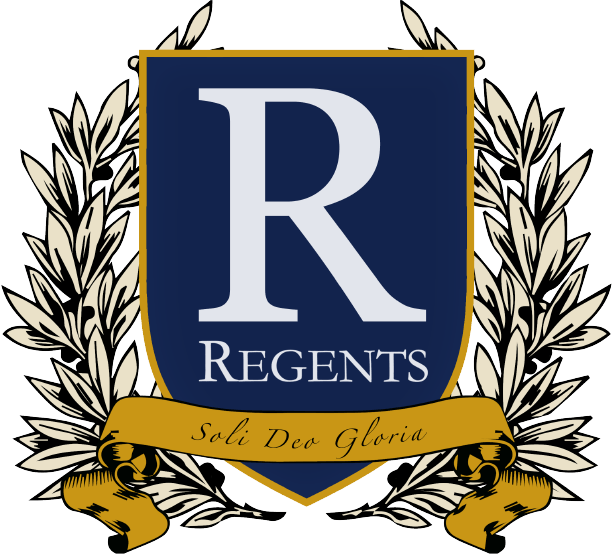
© 2026 Regents School of Charlottesville.
Tucked back in a corner at Regents on a Thursday morning, it’s “Valley Forge Day” for fifth graders. Dressed in dirty and frayed colonial clothing, the students, made up to look like they have war wounds, march single file out of their classrooms. Each student will be challenged to submerge their feet in a bucket full of ice for 30 seconds so they can apprehend the conditions of the Revolutionary War soldier in the bitter winter of 1777 when George Washington cobbled together a fighting force in Pennsylvania. The students will later feast on beef jerky and hard tack (flour, water, and sometimes salt) before they march in the woods and make camp, taking turns giving speeches about why it’s important to persist fighting the British army.
Living history days like Valley Forge Day are scheduled across the Grammar School calendar and are designed to give students a taste of the historical cultures their grade is studying. Second graders learning about the Lewis and Clark Exposition taste the food eaten in the wilderness and present journals they’ve been keeping as they track the journey westward. Third graders studying ancient Greece and Rome dress in togas and bring in pillows to lie around a triclinium for a Roman Feast. Fourth grade medieval feasts include jousting and dancing. These days help students experience a bit of the texture about the times in history they are learning.
“Valley Forge Day creates an appreciation for the Revolutionary War soldiers and their sacrifice,” says Charlotte Kennedy, fifth grade teacher at Regents. “These living history days make learning history memorable but also meaningful.”
Living history days appeal to multiple learning styles, especially those students who learn more by doing or hearing, says Kindergarten Teacher Emily Mais. At Thanksgiving, kindergarteners studying Native American culture receive handwritten invitations from first graders, studying the Pilgrims, inviting them to a joint Thanksgiving meal where they are seated next to each other. “The experiences have been so fruitful with our youngest students,” Mais said. “They provoke questions which in turn promote deeper learning and understanding.”
Ultimately, by experiencing the texture and conditions of a time and place, living history days help students cultivate empathy for other cultures and be more influential outside their church circles, said Amy Lindsey, Director of Curriculum and Instruction at Regents. This is something she saw with her six-year old in kindergarten this year: “He’s more thoughtful about Native American culture, and more considerate and has more respect for the impact they had on our own history. That’s huge.”
The 2020 Cardus study bears this out, showing that students who have graduated from ACCS schools are the most likely to be involved outside their church and have friends with different belief systems compared to their public and private school peers. Read more about the Cardus study here.